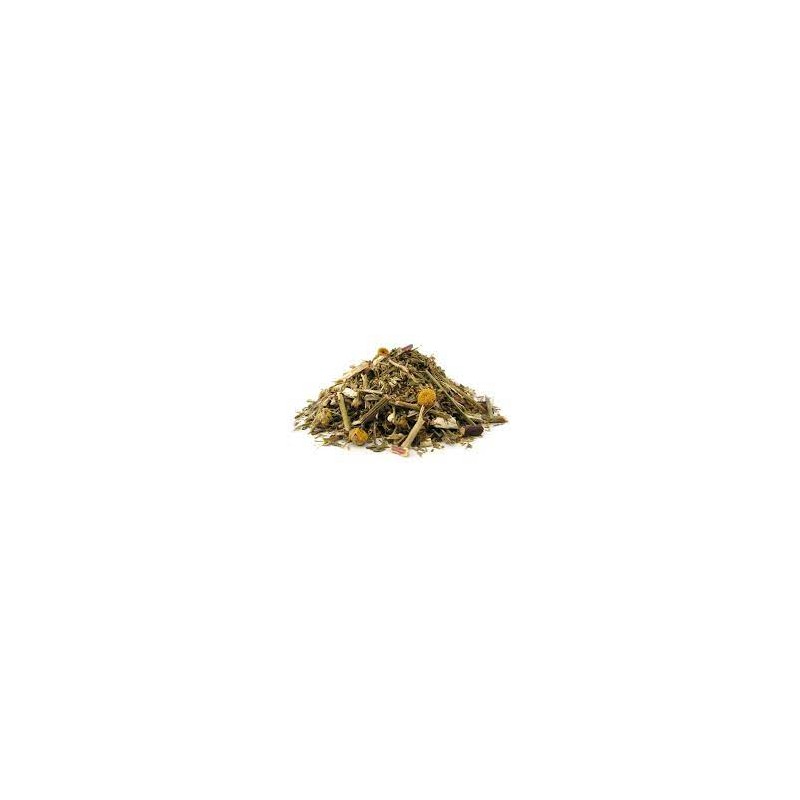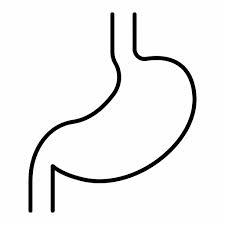
Reference: passiflora
Banner



Tansy - Aromatic Herb with Many Uses
Tansy, also known as Artemisia vulgaris, is an aromatic herb with a long history and diverse uses. This plant has a distinct fragrance and beautiful, feathery leaves. Tansy is widely cultivated and utilized for its health, culinary, and cosmetic properties. It is highly valued for its medicinal properties, as it contains valuable compounds such as flavonoids, tannins, and essential oils. Its antibacterial, anti-inflammatory, and antiviral properties make it helpful in alleviating infections, inflammatory conditions, and supporting the immune system. The herb can also be used to ease digestive symptoms like abdominal pain, bloating, and indigestion. In the culinary world, tansy is often used as a seasoning, adding a unique flavor and aroma to dishes. Its leaves and flowers can be dried and added to meats, fish, soups, sauces, and marinades. Tansy adds spiciness and freshness to dishes while aiding digestion with its cholagogue properties. In the field of cosmetics, tansy is utilized for its nourishing and antioxidant properties. It can be found in skincare products due to its potential to soothe and rejuvenate the skin.
 Security policy
Security policy
(edit with the Customer Reassurance module)
 Delivery policy
Delivery policy
(edit with the Customer Reassurance module)
 Return policy
Return policy
(edit with the Customer Reassurance module)
 Other names for tansy include:
Other names for tansy include:
 1. What is tansy and what are its uses ?
1. What is tansy and what are its uses ?
Tansy (Artemisia vulgaris) is a plant belonging to the Asteraceae family, native to Europe and Asia. Nowadays, it is cultivated and utilized in many countries worldwide, especially in Asia and Europe. Tansy has numerous applications in natural medicine and cuisine due to its medicinal and aromatic properties. One of its primary uses is its anti-inflammatory and antibacterial actions, making it effective in treating inflammatory and infectious diseases. It also contains substances that can act as antispasmodics, relieving muscle cramps and menstrual pain. Tansy can also improve digestion and alleviate gastrointestinal issues such as diarrhea, bloating, and indigestion. In the culinary field, tansy is used as a spice for meats, fish, and vegetables, adding a delicate aroma and a spicy taste. It is also popular in the production of beverages such as tea and infusions. Tansy contains many valuable nutrients such as vitamins C and K, carotenoids, and flavonoids. It can also act as a natural antiparasitic agent and help combat intestinal parasites. Tansy is a plant with many applications and medicinal properties, serving as an effective remedy in natural medicine and culinary pursuits.
 2. What are the active components in tansy and their health benefits ?
2. What are the active components in tansy and their health benefits ?
Tansy contains various active components, including essential oils, flavonoids, tannins, alkaloids, and other phytochemical compounds responsible for its health benefits. The essential oils in tansy have antibacterial and anti-inflammatory properties, aiding in the treatment of respiratory, skin, and urinary tract infections. Flavonoids and tannins possess antioxidant properties, protecting against cell damage caused by free radicals and supporting the immune system. Alkaloids in tansy, such as artemisinin, have antiparasitic properties, which can assist in treating parasitic diseases like malaria. Tansy also exhibits antiviral properties, aiding in combating viruses such as herpes. Furthermore, the phytochemical compounds in tansy can support digestion, reduce menstrual pain, and have a positive impact on the nervous system. Tansy has a wide range of applications in natural medicine and is available in the form of infusions, essential oils, capsules, and other dietary supplements.
 3. What are the potential side effects of using tansy ?
3. What are the potential side effects of using tansy ?
Tansy is an herb with potent properties, but like any dietary supplement, it can have side effects. The most common side effect of using tansy is an allergic reaction. Individuals who are allergic to plants in the Asteraceae family (including chrysanthemums, daisies, and chamomile) should exercise caution and avoid tansy. Other potential side effects of tansy include headaches, nausea, vomiting, diarrhea, gastrointestinal disturbances, and an increased risk of bleeding. Therefore, tansy should not be used during pregnancy, breastfeeding, or prior to planned surgical procedures. It is important to note that tansy contains strong chemical compounds such as thujone, which in large amounts can cause damage to the liver, kidneys, and other internal organs. As such, prolonged use of tansy should be consulted with a doctor or a nutrition specialist. Tansy can potentially have side effects, so it is important to exercise caution and use it according to the manufacturer's recommendations or after consulting with a doctor or nutrition specialist.
 4. What are the indications for using tansy and how is it taken ?
4. What are the indications for using tansy and how is it taken ?
Tansy is an herb with numerous health benefits that has been used in natural medicine for centuries. The indications for using tansy are diverse, and its advantages stem from its active ingredients such as essential oils, flavonoids, alkaloids, tannins, and others. Tansy is primarily used as a digestive aid, preventing bloating, abdominal pain, indigestion, constipation, and other gastrointestinal issues. Additionally, tansy has antispasmodic effects on smooth muscles, which can be helpful in treating asthma, bronchial spasms, and other respiratory problems. Tansy also exhibits antibacterial, anti-inflammatory, and antiviral properties, making it effective in the treatment of bacterial and viral infections. Furthermore, tansy can help alleviate menstrual pain, regulate the menstrual cycle, and has calming and stress-relieving properties. Tansy can be taken in various forms, depending on the purpose of use. It can be consumed as an infusion, tincture, tea, tablets, capsules, or essential oil. Drinking tansy as a tea or infusion is the simplest and most commonly used method. In this case, 1-2 teaspoons of tansy are steeped in a cup of boiling water for 10-15 minutes. A tincture can be prepared by soaking tansy in alcohol or vinegar for a period of 2-3 weeks. It is important to use tansy in moderation and according to the recommendations of a specialist or the manufacturer, as excessive consumption can lead to adverse effects. Tansy is also contraindicated during pregnancy and breastfeeding, as well as in children and individuals with cardiovascular or kidney diseases.
 5. Can tansy interact with other medications or supplements ?
5. Can tansy interact with other medications or supplements ?
Yes, tansy can interact with other medications or supplements, so it is important to consult with a doctor or pharmacist before starting to use it. Tansy may decrease the effectiveness of certain medications, such as oral contraceptives, immunosuppressants, heart medications, and antiepileptic drugs. Tansy may also affect the absorption of other dietary supplements, such as iron, magnesium, zinc, and vitamin B12. Individuals taking these supplements should avoid concurrent use of tansy. Additionally, tansy can induce allergic reactions in individuals sensitive to plants in the Asteraceae family, such as chamomile, marigold, or arnica. People with allergies to these plants should avoid using tansy or consult a doctor before starting its use. Lastly, tansy can have stimulating effects on the nervous system, so individuals taking sedatives, sleeping aids, or antidepressants should avoid using tansy or consult a doctor before starting its use.
 6. Are there any contraindications for using tansy ?
6. Are there any contraindications for using tansy ?
Like many other herbs and supplements, tansy may have contraindications for use that should be considered before starting treatment. Contraindications for tansy include pregnancy, lactation, liver diseases, kidney diseases, cardiovascular diseases, autoimmune diseases, and allergy to plants in the Asteraceae family (Asteraceae). Individuals taking anticoagulant medications, antiepileptic drugs, antidepressants, and antifungal medications should consult a doctor before using tansy. Tansy may interact with these medications and lead to serious side effects. It is also important to pay attention to the dosage of tansy, as an excess can cause undesirable effects such as headaches, nausea, vomiting, diarrhea, dizziness, and even seizures. Before using tansy, it is advisable to consult with a doctor or pharmacist to determine the appropriate individual dosage and avoid potential adverse effects.
![]() 7. What scientific research has been conducted on tansy ?
7. What scientific research has been conducted on tansy ?
Tansy is a plant that has been used in folk medicine for centuries to treat various ailments. However, in recent years, numerous scientific studies have been conducted to examine the effectiveness and safety of tansy. One study conducted in 2017 found that tansy extract exhibits antibacterial and anti-inflammatory properties. Another study in 2018 demonstrated that tansy has potent antioxidant properties, which may contribute to the reduction of inflammation in the body. Research from 2020 suggests that tansy may be an effective antiviral agent, particularly against the herpes virus. Other studies suggest that tansy can help regulate blood sugar levels, which may be beneficial for individuals with diabetes. Overall, scientific research conducted on tansy suggests that it may have many health benefits. However, most of these studies were performed in vitro or on animals, so further research is needed to determine the effectiveness of tansy in humans and any potential side effects.
 8. Are there any differences between tansy and other herbs used in natural medicine ?
8. Are there any differences between tansy and other herbs used in natural medicine ?
Tansy is one of many herbs used in natural medicine that can have beneficial effects on health. However, like any herb, it has its unique properties and chemical composition, which can influence its actions. Compared to other popular herbs such as echinacea or St. John's wort, tansy is primarily known for its calming and antispasmodic properties, which can help alleviate symptoms such as menstrual pain or indigestion. Additionally, tansy is rich in essential oils that exhibit antibacterial and antifungal properties, which can contribute to overall health improvement. Other popular herbs like peppermint or lemon balm also have calming and analgesic effects, but they also have different properties and uses. Peppermint can help alleviate symptoms related to digestive disorders, while lemon balm can assist in relieving symptoms associated with excessive stress and anxiety. It is worth noting that each herb has its indications and contraindications for use, so it is important to consult a doctor or specialist in natural medicine before starting herbal supplementation.
 9. Can tansy be helpful in treating digestive system disorders ?
9. Can tansy be helpful in treating digestive system disorders ?
Tansy is an herb with numerous medicinal properties, including its effects on the digestive system. Tansy contains essential oils, flavonoids, tannins, alkaloids, which have a positive impact on digestion and the gastrointestinal tract. Tansy is used for indigestion, bloating, abdominal pain, nausea, vomiting, and diarrhea. The essential oil in tansy has bactericidal and antiviral properties, which can be particularly helpful in cases of bacterial or viral infections of the gastrointestinal tract. Tansy can also act on the bile secretion system, aiding in the acceleration of bile flow and preventing the formation of gallstones. For this reason, it is often recommended in cases of gallbladder issues. Although tansy seems to be a natural remedy for digestive system disorders, it should not be used in cases of inflammatory bowel diseases, peptic ulcers, or autoimmune diseases. It is always advisable to consult a doctor before using tansy or other herbs for digestive issues.
 Scientific research has been conducted by:
Scientific research has been conducted by:
 STORAGE
STORAGE
Tansy is an herb that should be stored properly to preserve its medicinal properties. To avoid loss of aroma and nutritional value, tansy should be stored in a dry, dark, and cool place. The best way to store tansy is by placing it in an airtight container made of dark glass or a jar with a well-fitted lid. It is also important to avoid storing tansy near sources of heat and moisture, such as the stove, sink, or refrigerator. During storage, tansy should be protected from sunlight as UV rays can degrade its nutritional components. Storing tansy as described above will help maintain its medicinal properties and aroma for a long time.
 SCIENTIFIC SOURCES
SCIENTIFIC SOURCES

Thank you for your interest in our website dedicated to herbs! We appreciate that you value our work and effort put into creating valuable content. If you would like to share our information on your website, we encourage you to do so. However, please respect our copyright and do not copy the content without our permission.
If you would like to share our website, you can always provide a link that leads to our page. This will not only help maintain the integrity of our work but also allow your readers to discover more valuable information about herbs.
Thank you for your understanding and support! If you have any questions or need further information, feel free to contact us.
Reference: passiflora
Reference: barley
Reference: dandelion
Reference: Fennel Seeds
Reference: chamomile
Reference: stevia
Reference: Ashwagandha
Reference: salvia
Your review appreciation cannot be sent
Report comment
Report sent
Your report cannot be sent
Write your review
Review sent
Your review cannot be sent

Tansy - Aromatic Herb with Many Uses
Tansy, also known as Artemisia vulgaris, is an aromatic herb with a long history and diverse uses. This plant has a distinct fragrance and beautiful, feathery leaves. Tansy is widely cultivated and utilized for its health, culinary, and cosmetic properties. It is highly valued for its medicinal properties, as it contains valuable compounds such as flavonoids, tannins, and essential oils. Its antibacterial, anti-inflammatory, and antiviral properties make it helpful in alleviating infections, inflammatory conditions, and supporting the immune system. The herb can also be used to ease digestive symptoms like abdominal pain, bloating, and indigestion. In the culinary world, tansy is often used as a seasoning, adding a unique flavor and aroma to dishes. Its leaves and flowers can be dried and added to meats, fish, soups, sauces, and marinades. Tansy adds spiciness and freshness to dishes while aiding digestion with its cholagogue properties. In the field of cosmetics, tansy is utilized for its nourishing and antioxidant properties. It can be found in skincare products due to its potential to soothe and rejuvenate the skin.